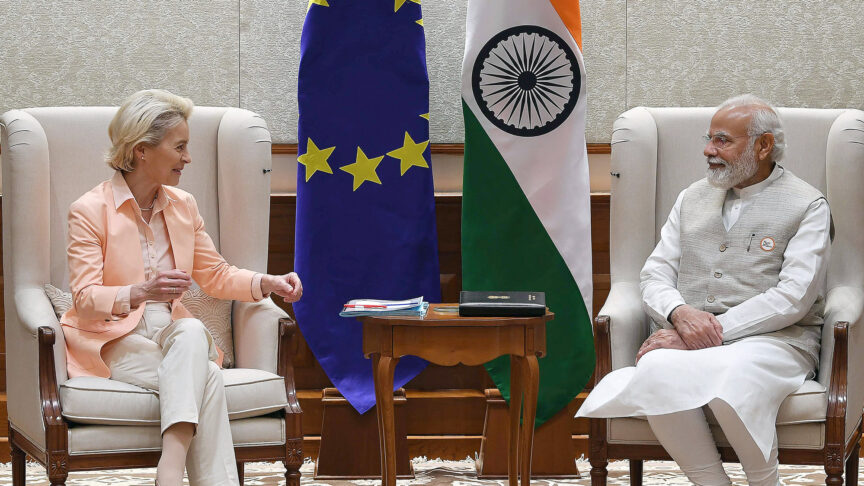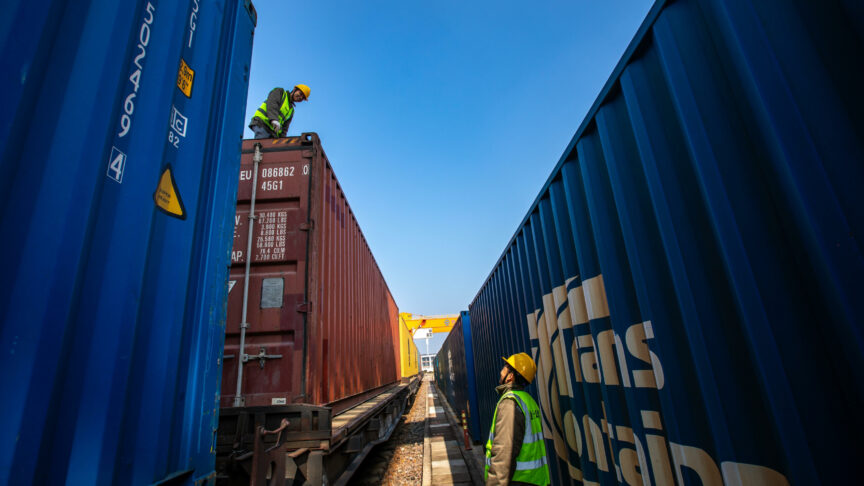It isn?t only about North Korea
North Korea’s attack on Yeonpyong Island last week, and reaction to it from Seoul to Washington, highlighted the power shift that has taken place within Asia. Arguments that the shelling represented a “last gasp” by Kim Jong-il’s regime are wishful thinking, and events on the Korean peninsula can no longer been seen in isolation from the complex balance of power in the region.
Following North Korea’s deadly attack on Yeonpyong Island last week, South Korea considers itself a frontline state yet again. The reaction in Seoul makes that clear; the South Korean defence minister, who only a day before the shelling had burnished his hawkish credentials by raising the prospect of re-introducing U.S. nuclear weapons to the country, got the sack for not having initiated a prompt enough response to the North’s artillery barrage. And while diplomats have begun their ballet – China has, unusually, sent foreign policy tsar Dai Bingguo to soothe the South Korean president’s feelings – for the first time since six-party talks were started in 2003 it is South Korea which has open and public reservations about their usefulness. In this sense, the incident on Yeonpyeong Island breaks with a long-term trend. In reversing a decline in actual acts of the violence between the two Koreas that has lasted a quarter of a century, it further represents a shift in the situation on the peninsula. Perhaps most importantly, however, the shelling of Yeonpyong highlights a power-shift in Asia, and makes it clear that Pyongyang’s actions cannot be seen outside of a regional power balance context.
The DPRK’s usual behaviour has been to bluster and threaten, and it has repeatedly crossed all red lines set by the United States and international resolutions. But real violence has been declining for decades. The civilians killed on Yeonpyeong are not the first to die in South Korea since 1953. However, on South Korean territory, one must go back to 1968 to find such a high level of violence – a raid on the seat of the presidency in Seoul, massive commando landings and skirmishes, as well as the capture of a U.S. spy ship for good measure.
This year has seen a defiant reversal of the long-term decline of actual violence. First came the sinking of the Cheonan corvette in March, killing 46 sailors. The DPRK has never admitted to this action – but it has now launched a massive and open artillery attack on civilian targets in South Korea, and threatens much more in more usual language. Can we treat all this as just another cycle in the long history of on-off talks about proliferation in the Korean peninsula? Even slow learners have become realists about Pyongyang’s crafty approach to negotiations, and its stage-managed use of irrational and unpredictable behaviour to remain on the radar screen and force its interlocutors to pay attention. “Buying the same horse twice” (or actually, for the umpteenth time), is probably the number one lesson from those experiences.
Pyongyang’s resort to provocation is perhaps a familiar chapter of its repertory. Cynics turn everything around. North Korea revealed, only a week ago, a large nuclear enrichment plant built where you’d least expect it – a stone throw away from the Yongbyon nuclear plant: this is probably one of the places on earth most closely watched from the skies, and the disclosure adds insult to injury. Their artillery barrage would be their own peculiar way to call for quick talks – in sum, a calling card, Kim family style.
Others profess “last gasp” theories. Kim Jong-il’s succession is a disaster. The country is crumbling. In some ways, the Obama administration’s new doctrine of “strategic patience” has been a watered down version of the “last gasp” school. It also fits in well with China’s regular advice of “restraint” to all parties.
These theories are wishful thinking, and China knows it well, while America condones them for lack of a better idea. In reality, the situation has shifted considerably in and around North Korea – so much that Pyongyang’s actions cannot be seen outside of a regional balance context. Let’s start from the core to the periphery:
- What Western observers wanted to see as another bizarre succession, this time in favour of a 27-year-old Kimster partly raised in a Swiss boarding school is in fact a turn to a more collective leadership. Kim Jong-il is still around. Several promotions have occurred, within and outside the royal family. Most of all, China has given its stamp of approval. Kim making two China trips in 2010 is a previously unheard of occurrence, and he took with him many of the top leaders, not just his son. Hu Jintao going out of his way to meet him in Changchun is also an exceptional show of support.
- Both the sinking of the Cheonan and the shelling of Yeonpyong make aggressive use of simmering maritime disputes between the two Koreas. Pyongyang indeed overreaches in its actions, but keeps a reference to the issue – for example, by alleging intrusive Southern Korean military exercises. This is clever use of the regional context – China has launched its own series of regional claims and incidents. North Korea moves in the slipstream of China, but fires across its bow. This is vintage Kim Il-sung strategy – making opportunistic use of another conflict, therefore counting on a weak response by the targeted party.
- In fact China is also trapped – if it has second thoughts about all this, it’s hard to reverse course now. Cooperating with the US and Japan would be weakening its own case in the East China Sea and in pushing back the U.S. Navy deployments. This is China’s strategic priority, in a year when it has activated a record number of maritime issues. Just as it couldn’t possibly approve checking out ships on the high seas under the Proliferation Security Initiative, it has already committed to oppose military exercises in the Yellow Sea. For all practical purposes, China and North Korea are closer allies than at any time since Mao’s death. China’s mounting economic influence on North Korea – and South Korea’s official admission and acceptance of this influence – make this a valid proposition. For all practical purposes, there would be a greater chance today of a federation between China and North Korea than of a Korean reunification. Only a patriotic façade prevents this.
- North Korea has moved in another slipstream: Iran, and China’s defence of Iran. To those who wanted to believe that Pyongyang’s accession to nuclear weapons was more about status than reality, it is proving that North Korea remains dynamic. Since centrifugal uranium enrichment is dual purpose, and since America is giving signs of a compromise with Iran, North Korea claims the status of most favoured nation: whatever Iran gets, it must get. Pyongyang has just put up another horse for sale, and it’s a big one.
It’s impossible to separate the above from the overall test of the American alliance occurring in the Asia-Pacific. China has raised its profile, America has countered with closer ties to worried allies and partners. North east Asian countries – Japan, Korea, Taiwan – want the best of both worlds: China’s business, and a US security blanket. North Korea counts on conflict avoidance by these countries to move ahead. It already has China’s business. Now it wants a US security guarantee.
This would take the form of acceptance of its nuclear status, and regime recognition. No less.
If we think this is science fiction, we need only to look back at the last two decades and ask ourselves: was the regime’s survival predicted? Could we imagine it would acquire nuclear weapons from its weak position? Could we imagine China would lean so much to one side?
Were we to look for the first case of a powershift in Asia, this would be it. It will be interesting, to say the least, how South Korea, America and Japan buck this trend.
The European Council on Foreign Relations does not take collective positions. ECFR publications only represent the views of their individual authors.


